1769 Seed Archive
The 1769 Seed Archive marks a turning point in the history of Aotearoa, when the Endeavour commanded by James Cook arrived at the mouth of the Waimatā River in October 1769, bringing the Ra’iatean star navigator Tupaia and the first Europeans ashore.
From that moment, the lives of local people, plants and animals changed forever. The 1769 Seed Archive features plants that grew in the Tairāwhiti, and were familiar to local Māori at that time. Many of the species collected by Joseph Banks and Daniel Solander from the Royal Society party of artists and scientists on board the Endeavour are now rare or endangered.
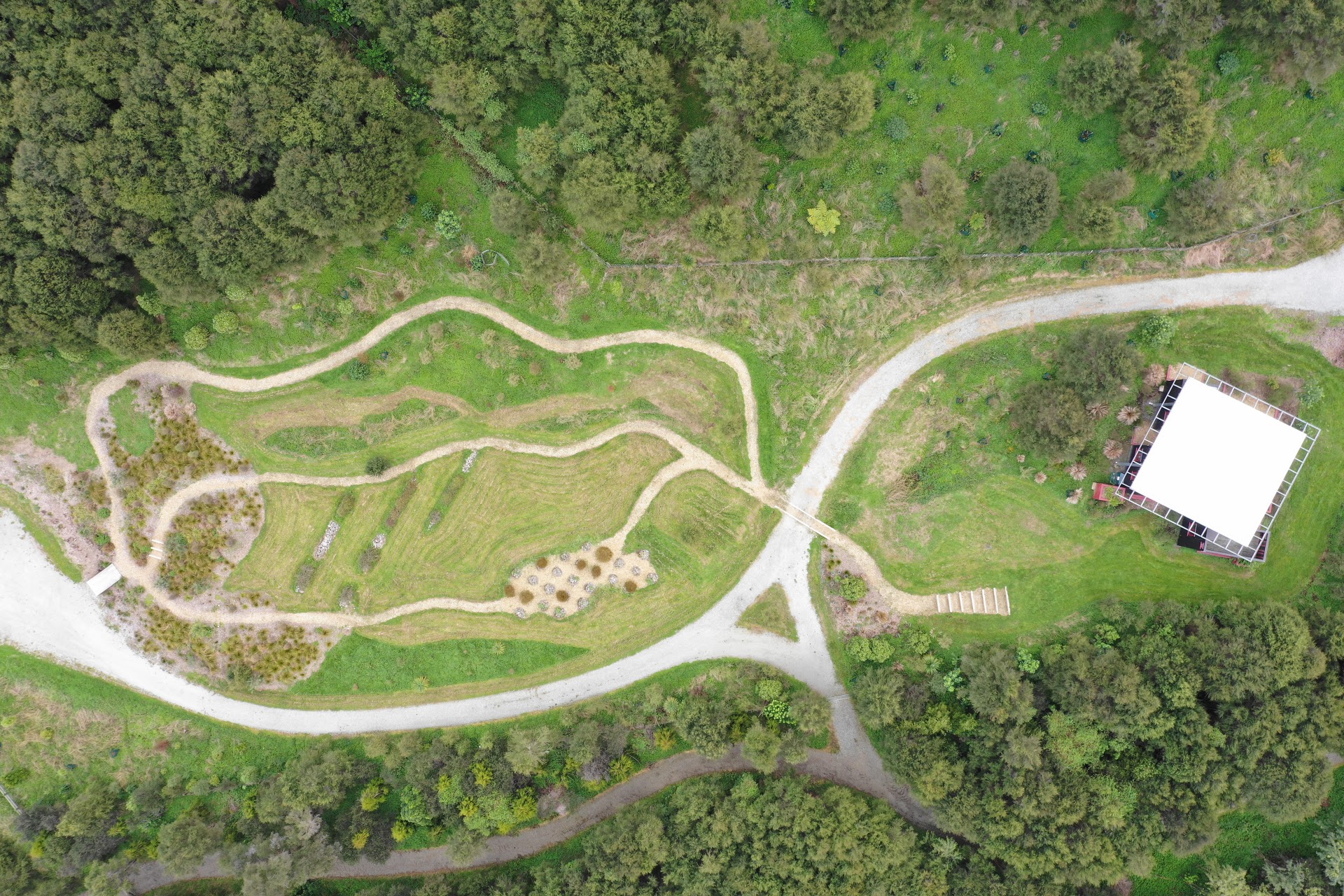
Malcolm Rutherford, trained at the University of Oxford Botanic Gardens, and Graeme Atkins, tohunga taiao from Ngāti Porou, are kai tiaki (guardians) for the garden and its interpretation.
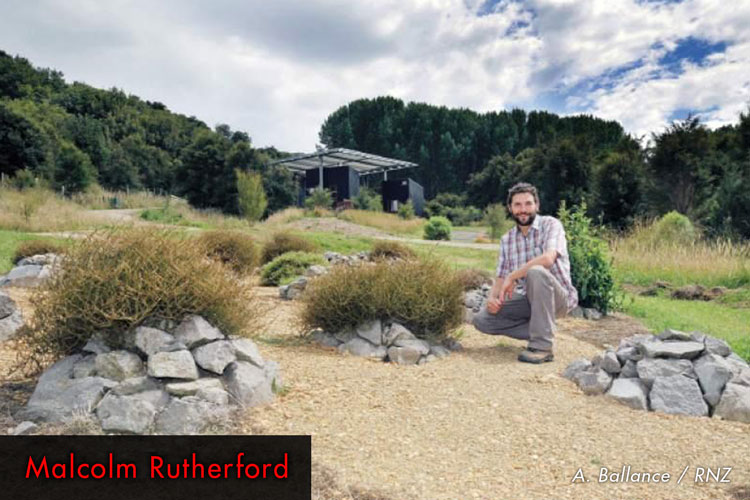
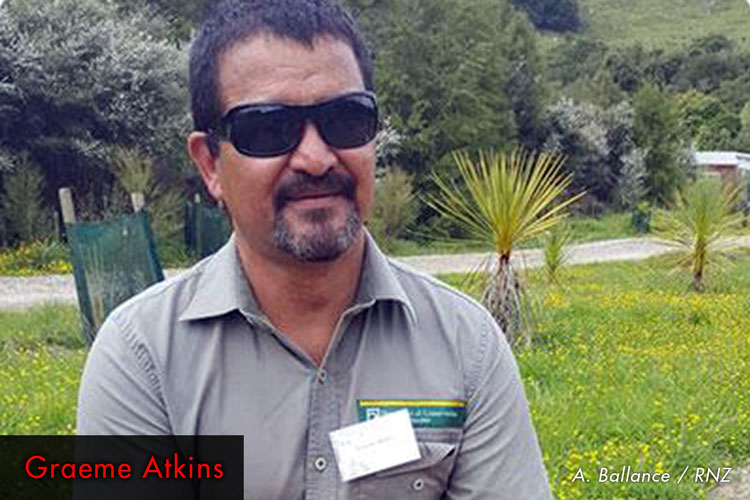
The Welcome Shelter that stands above the garden was designed by Sarosh Mulla as his PhD project and featured in an exhibition at the Venice Biennale. Built by volunteers with aroha and materials and funding donated by sponsors, the Welcome Shelter serves as a base for our wilderness education programme for children, Wild Lab / Tiaki Taiao.
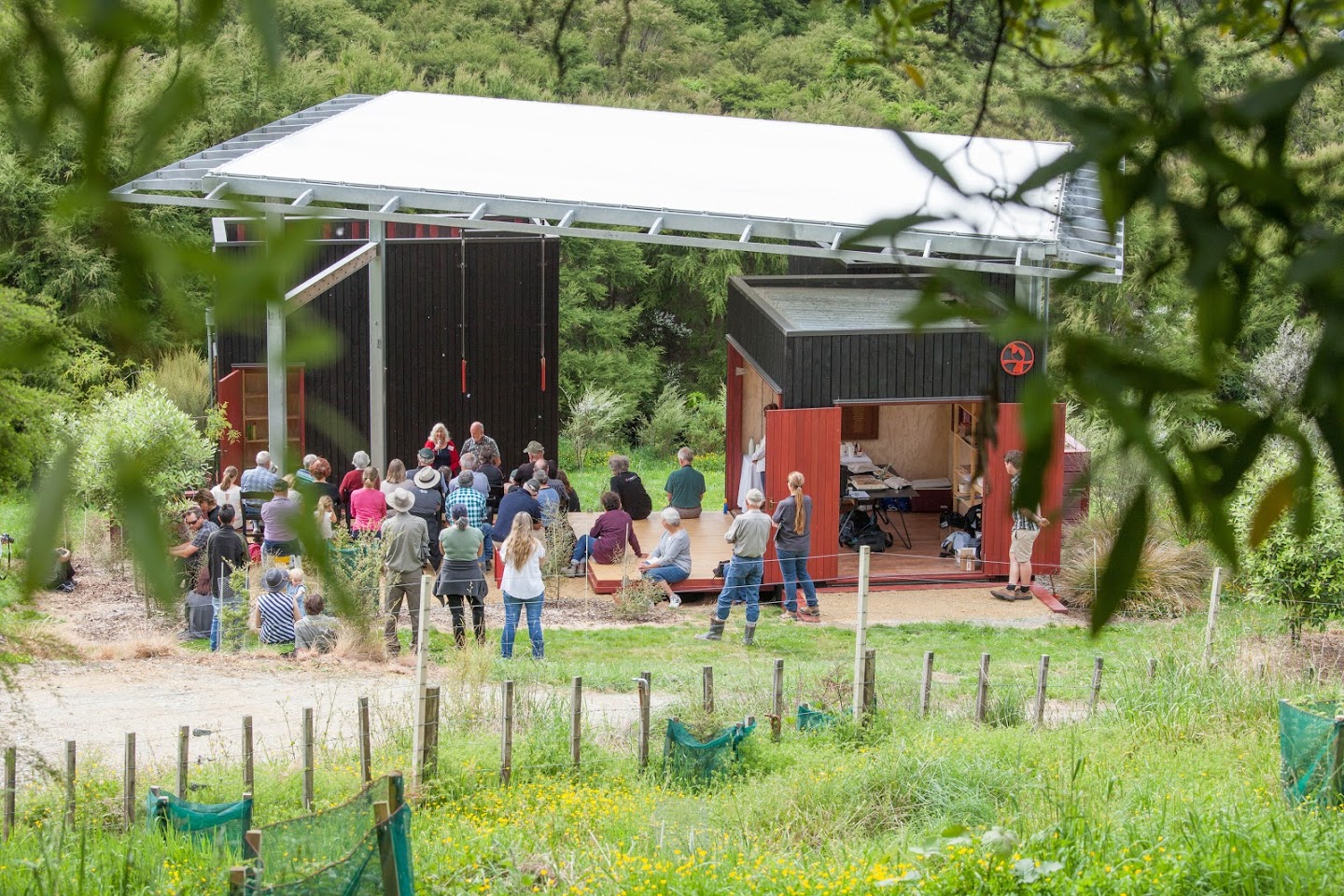
In the Wild Lab / Tiaki Taiao workshops, delivered by a team led by Pete Jarratt and co-designed by Pete and Elle Jarratt with Longbush Trustees, scientists and mātauranga experts, rare endangered species are celebrated with a sense of wonder and fun. Through ancestral knowledge, science, art and immersive experience, groups explore the challenges faced by indigenous plants and animals, and how to safeguard their future.

Design of the garden
Philip Smith, O2 landscapes, designer
The 1769 Seed Archive was designed by Philip Smith to evoke the experiences of Banks and Solander during their visit to Tairāwhiti, taking inspiration from the plants themselves, their collections and the observations they made at the time.
Planting the garden began in 2 June 2015, and continues to evolve, guided by Philip, Malcolm and Graeme.
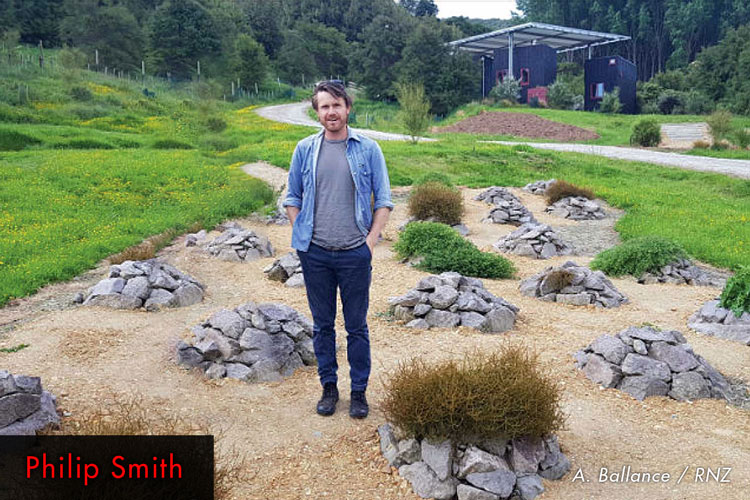
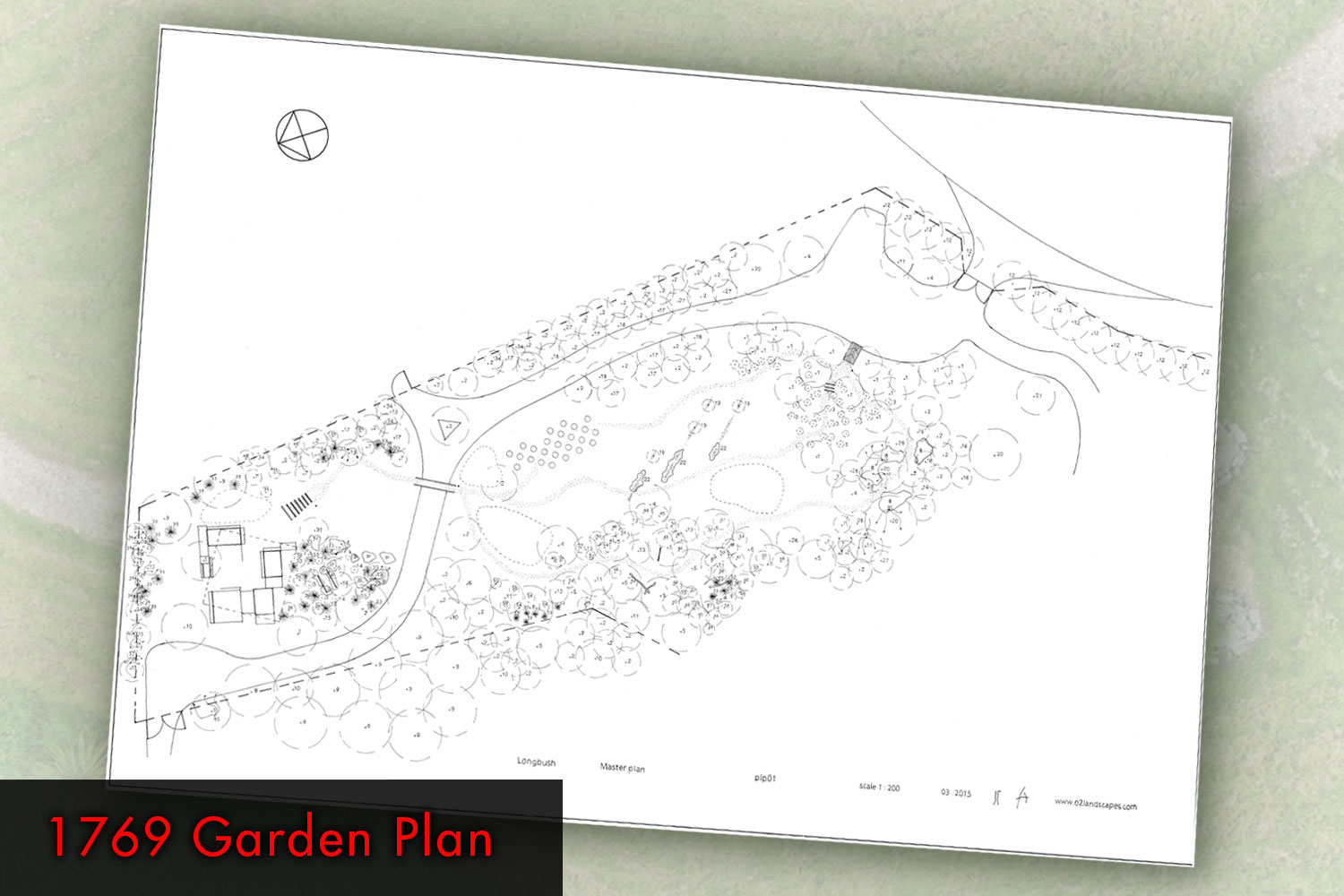
For a thoughtful commentary on 3 local gardens that mark Endeavour’s arrival, see this paper by Bindy Barclay and Prof. Jacky Bowring, Lincoln University.
A blaze of yellow
From the car park you are greeted by a grove of Kōwhai (Sophora tetraptera). When Banks and Solander first arrived in Turanganui-ā-Kiwa (Gisborne) on October 8 1769, the kōwhai trees were in flower.
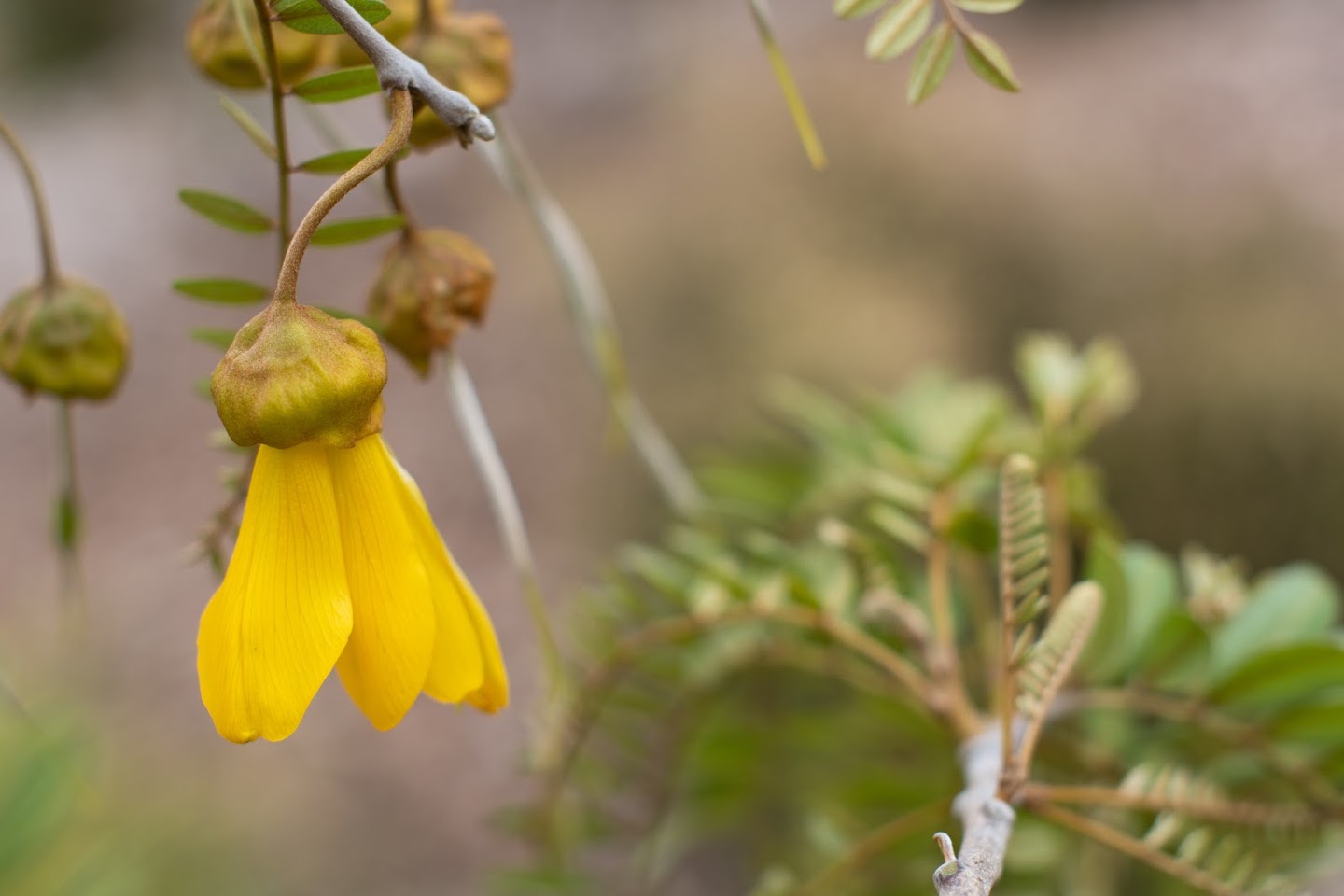
Native as exotic
Local flora and fauna, familiar to Māori, seemed very strange to Banks and Solander. This was the first time that plants from Aotearoa had been seen, collected and studied by Europeans.
As you cross the bridge with its poutama pattern (based on tukutuku woven panels in meeting-houses) and enter the 1769 Seed Archive, the plants seem unfamiliar or exotic - with bright pops of the green foliage and white flowers of Koheriki (Scandia rosifolia - NZ angelica), and strange, twisted forms of Mingimingi (Coprosma rhamnoides).
As you walk up the paths, you enter a land of tall shadowy columns, the threatened heart-shaped Kōhūhū (Pittosporum obcordatum).
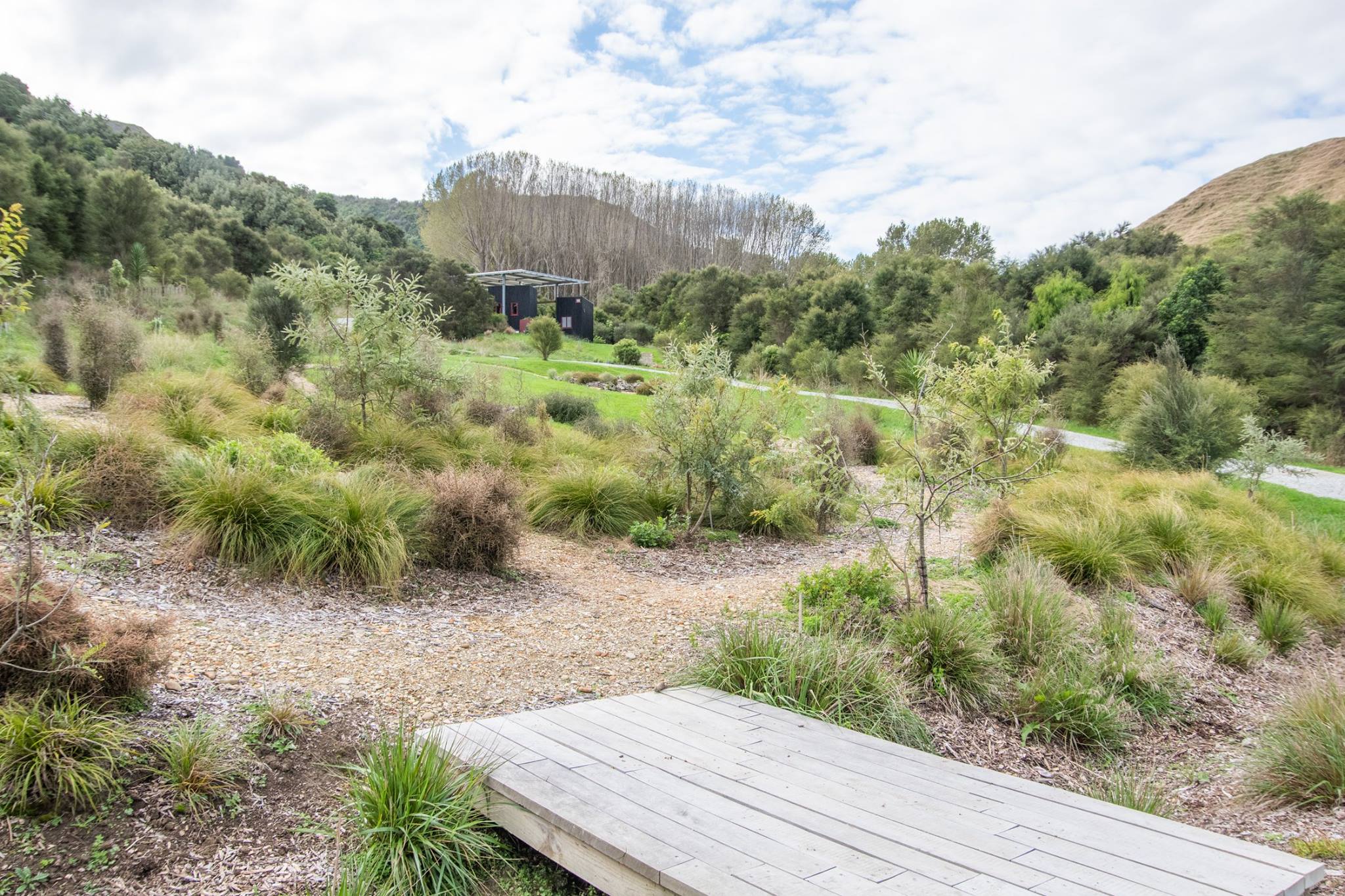
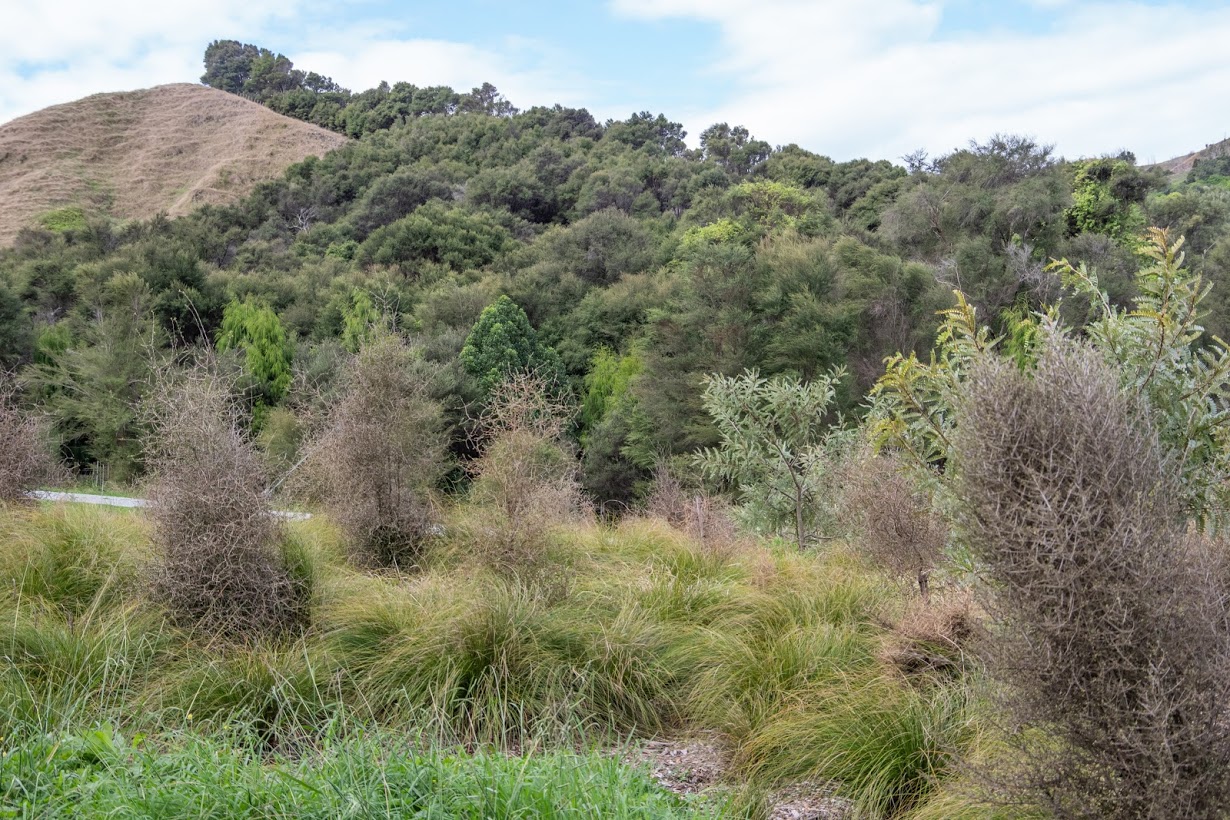
Intersecting groves
The lower garden is based on a pattern of intersecting groves, first Kōwhai, then Pittosporum obcordatum. On the upland path, this runs into a Kahikatea grove, intersecting the existing Kānuka forest.
The Kahikatea trees in the forest grove are planted as individual trees visible from the entrance (for at least the first 50 years or so). Banks mentioned “fine groves” of large trees on the flats at Tūranganui, almost certainly Kahikatea.
Stone rows and mounds
The stone rows and mounds are designed to evoke the geometry of ancestral Māori gardens.
The stone rows are inspired by those found at Palliser Bay, where stone walls surrounded the gardens.
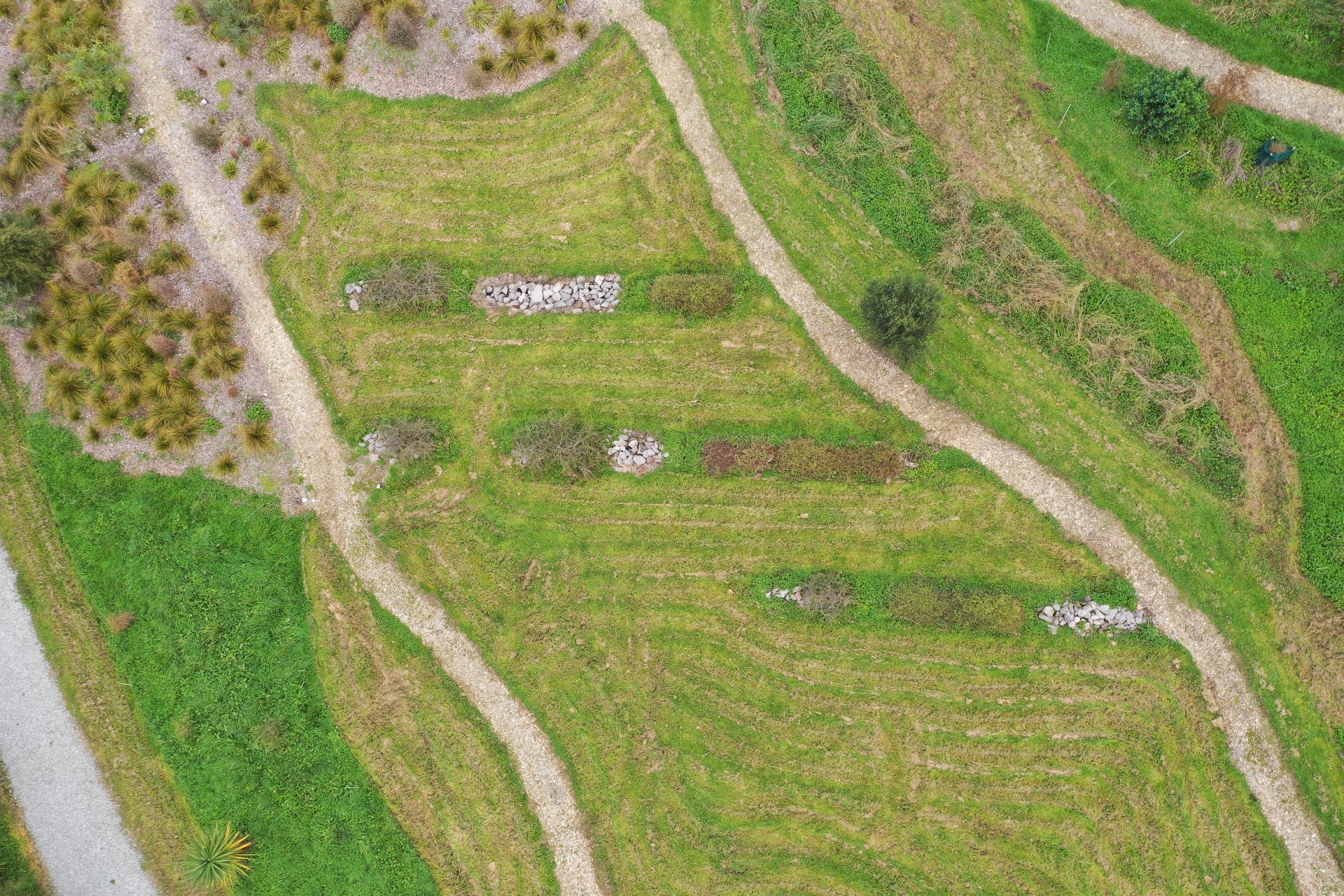
The stone mounds are set out in a quincunx pattern (like the five on a dice), noted by Joseph Banks in the kūmara gardens in Anaura Bay. In the 1769 Seed Archive they’ve been laid out using pegged strings to create the precise geometry - the same method recorded by Banks.
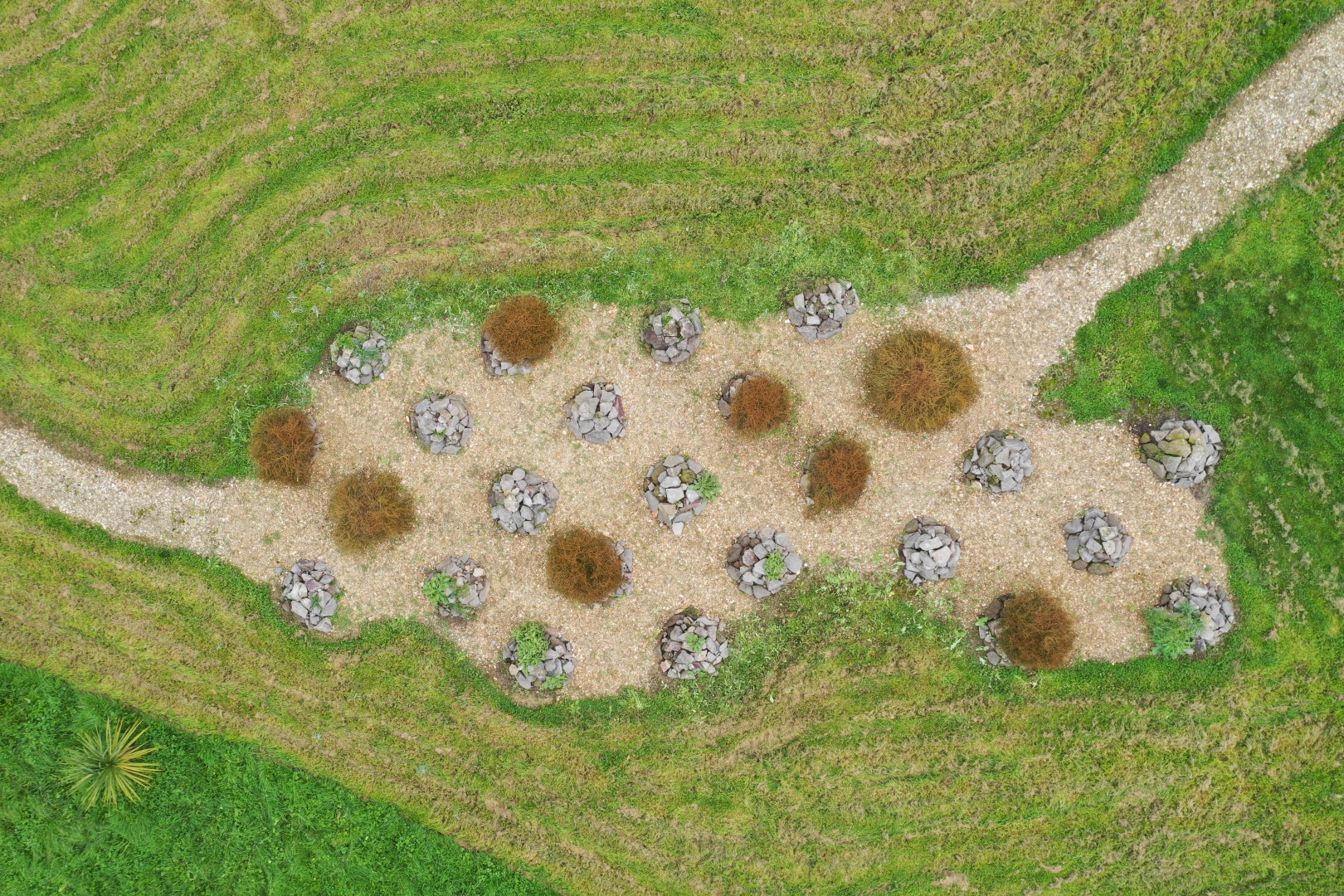
In the 1769 Seed Archive the stone rows and mounds are used to showcase rare and interesting plants, for instance Tarakupenga (Coprosma acerosa), Tūkōrehu (Plantago raoulii), Kōpata (Pelargonium inodorum) and Te Auanga (Geranium retrorsum).
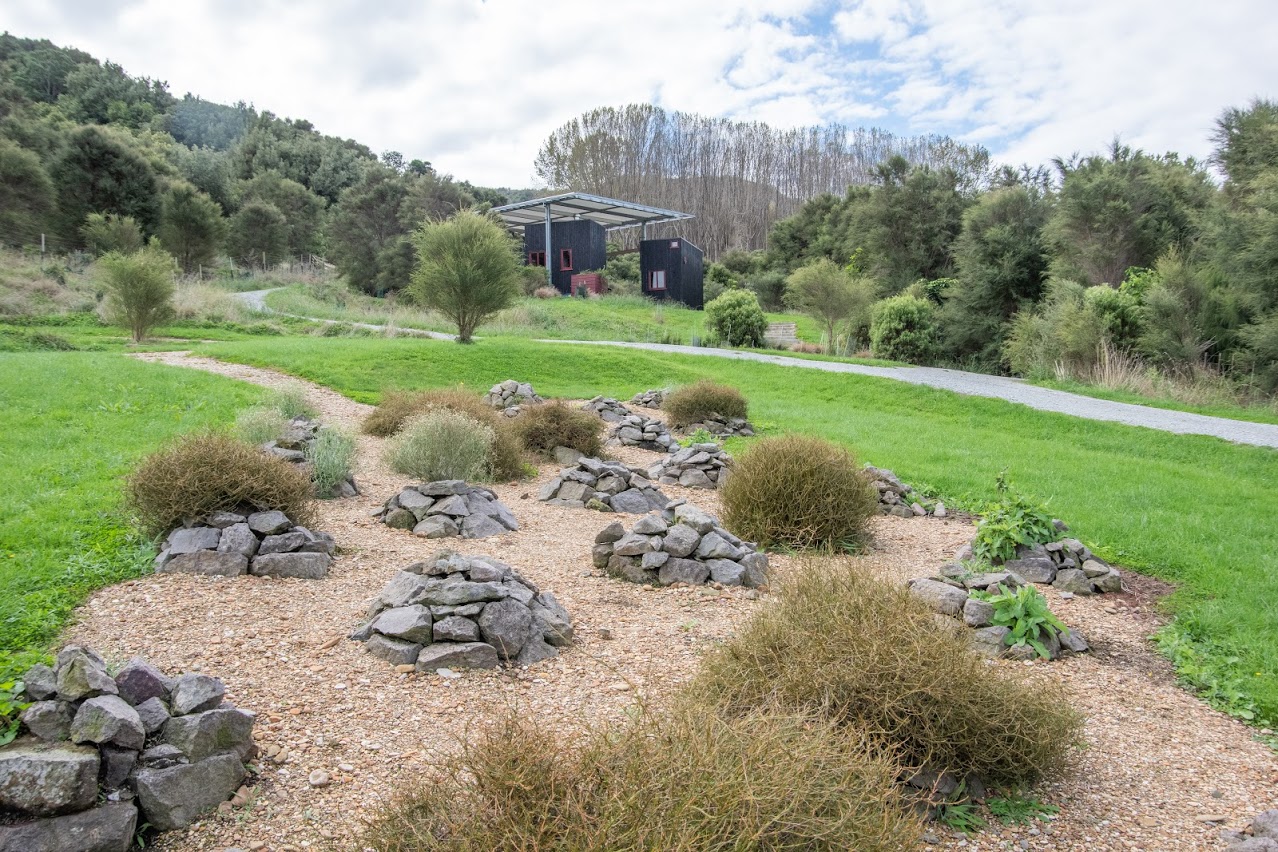
Banks and Solander
Joseph Banks, a wealthy young landowner from Lincolnshire who had developed a passion for botany, sponsored the Royal Society party of scientists and artists on board the Endeavour. He was only 26 years old when the Endeavour arrived in Tūranga-nui-ā-Kiwa / Gisborne) in October 1769.
Banks was accompanied by Dr. Daniel Solander, a favourite student of the great Swedish naturalist Carl Linnaeus. Linneaus invented binomial taxonomy, a method used to classify and organise the rich variety of new plants and animals that were being seen around the world by European explorers at this time.
The Endeavour, commanded by Lieutenant James Cook, was sent by the Royal Society of London and the Admiralty into the Pacific to observe the Transit of Venus in Tahiti, and to discover Terra Australis Incognita, the fabled Unknown Southern continent that 18th century geographers thought must exist to counterbalance the Northern continents.
When they came ashore in Tūranganui, Joseph Banks was sure they had found Terra Australis. In great excitement he and Dr Solander began collecting specimens of new and unfamiliar plants which they took back to the Endeavour’s Great Cabin.
There they were sketched by Sydney Parkinson, the Quaker artist; classified and described by Banks and Solander using the Linnaean method of counting the pistels and stamens on their flowers; and pressed between pages of a commentary on Milton’s Paradise Lost. Many of these pressed plants still survive in herbaria collections in the United Kingdom, Australia and New Zealand.
Banks and Solander collected specimens of 73 new species of plants in Turanganui-a-Kiwa; 115 in Anaura Bay; and 193 in Uawa (Tolaga Bay). 52 of these species are currently represented in the garden.
Background research on their Tairāwhiti collections was carried out by Ewen Cameron, Curator (Botany) at Auckland War Memorial Museum, and Anne Salmond, Chair Longbush Ecological Trust: click here for the illustrated plant list.
Plant Profiles
Kiekie (Freycinetia banksii) in the 1769 Seed Archive is a valued weaving material used for kete (kits), whāriki (fine mats) and tukutuku (woven wall) panels. The fruit of Kiekie is also delicious . For more information on Māori uses of the plant click here.
Northern Rātā (Metrosiderous robusta) - This Northern Rātā will give shelter to those in the Welcome Shelter, and marks the entrance to the rest of Waikereru. In Māori, people of influence are compared to a sheltering rātā tree (Rātā whakaruruhau).
Kāretu - Holy grass (Hierochloe redolens) - This grass grows on either side of the bridge as you enter the garden. Found throughout New Zealand, it was collected on Banks and Solander on their first day ashore. Kāretu is used for weaving necklaces and anklets which were worn as perfumed decorations. It does not smell much when first picked, but the fresh grassy smell intensifies over the following months. For more information on Māori uses of the plant click here.
Tī Kouka (Cordyline australis) - Planted beside the driveway up to the Welcome Shelter, this plant was used as a way-marker along walking trails. It was also used for food, cordage, medicine, weaving and thatching. Here on the East Coast, the heads of tī kouka were used as toboggans for sliding down hills.
Māori also described Tī in a binomial fashion. Tī marks the Genus, while other words were used to mark particular varieties eg tī ngāhere, tī kouaka, tī kapu, tī kupenga, etc. For more information on Māor uses of the plant click here.
Kaikomako (ahikōmau - Ngāti Porou) (Pennantia corymbosa) - A sharpened dried stick from this tree was rubbed on a soft wood such as Māhoe or Pate to make fire. Click here for more information.
Whauwhaupakū and puawhānanga (Pseudopanax arboreus and Clematis paniculata) - These are planted together in the Kahikatea grove on the Western side of the garden. They are planted together to recognise the beautiful Māori legend that features these ‘stars of the forest’.
To some tribes whauwhaupaku (the five finger tree) and puawānanga were the offspring of Puanga (Rigel, the bright star of Orion) and Rehua (Antares, the bright star of Scorpion). Their rising as morning stars signals the approach of summer, the period between these two events (June to November) coinciding with the flowering, first of whauwhaupakū (Pseudopanax arboreus and then puawānanga (Clematis paniculata). (source)
The arrival of the star shaped flowers of puawānanga signals the time of year to begin harvesting eels again - an important food source in the Waimatā River.
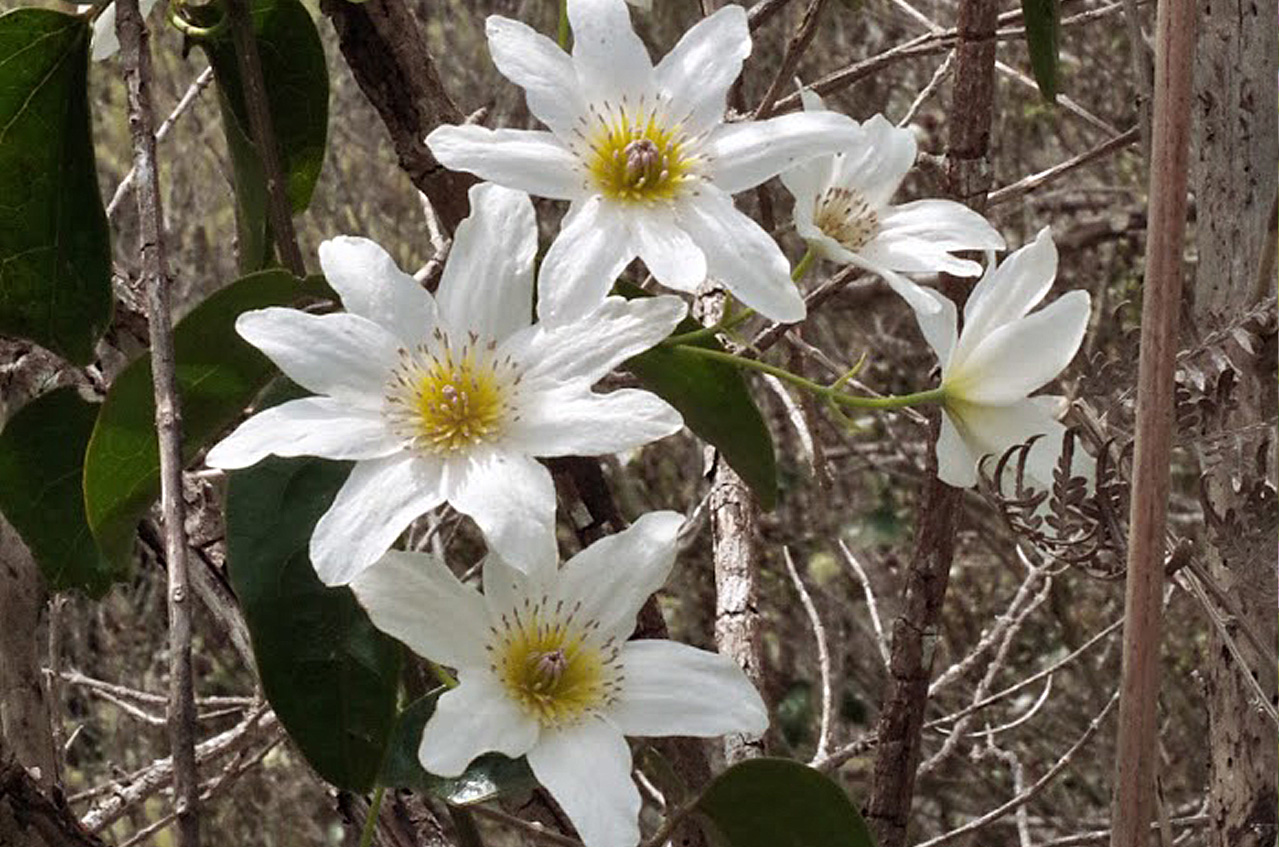
Raurōroa - Shore puha (Sonchus kirkii) - The indigenous Pūhā has now been largely replaced by introduced sow thistle species that came in with grass seed. This plant grows in open disturbed land, so with increasing development of farm land, this species is declining.
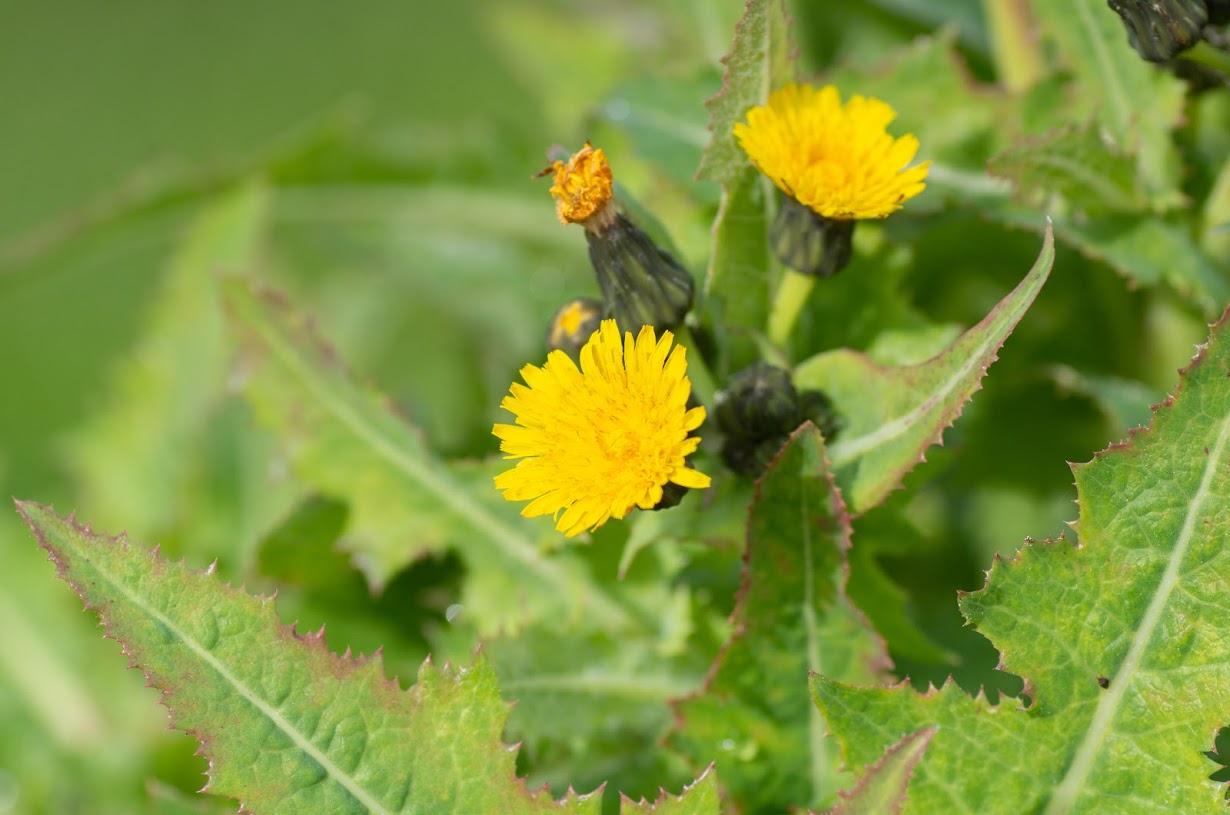
Heart-leafed Kōhuhu (Pittosporum obcordatum) - Threatened, Nationally Vulnerable: ~40 locations nationwide. The widespread clearance of the easterly, lowland alluvial forests favoured by this species put it at risk. This decline has continued, even in protected forest remnants, due to subtle changes in forest microclimates and water supply,

Many populations are also threatened by the spread of aggressive weeds, which suppress (or prevent) regeneration, and smother adult trees. In some places, only single trees are left. Fortunately, like many Pittosporum, these plants may be either female, male or sexually inconstant, so some isolated individuals can set seed.
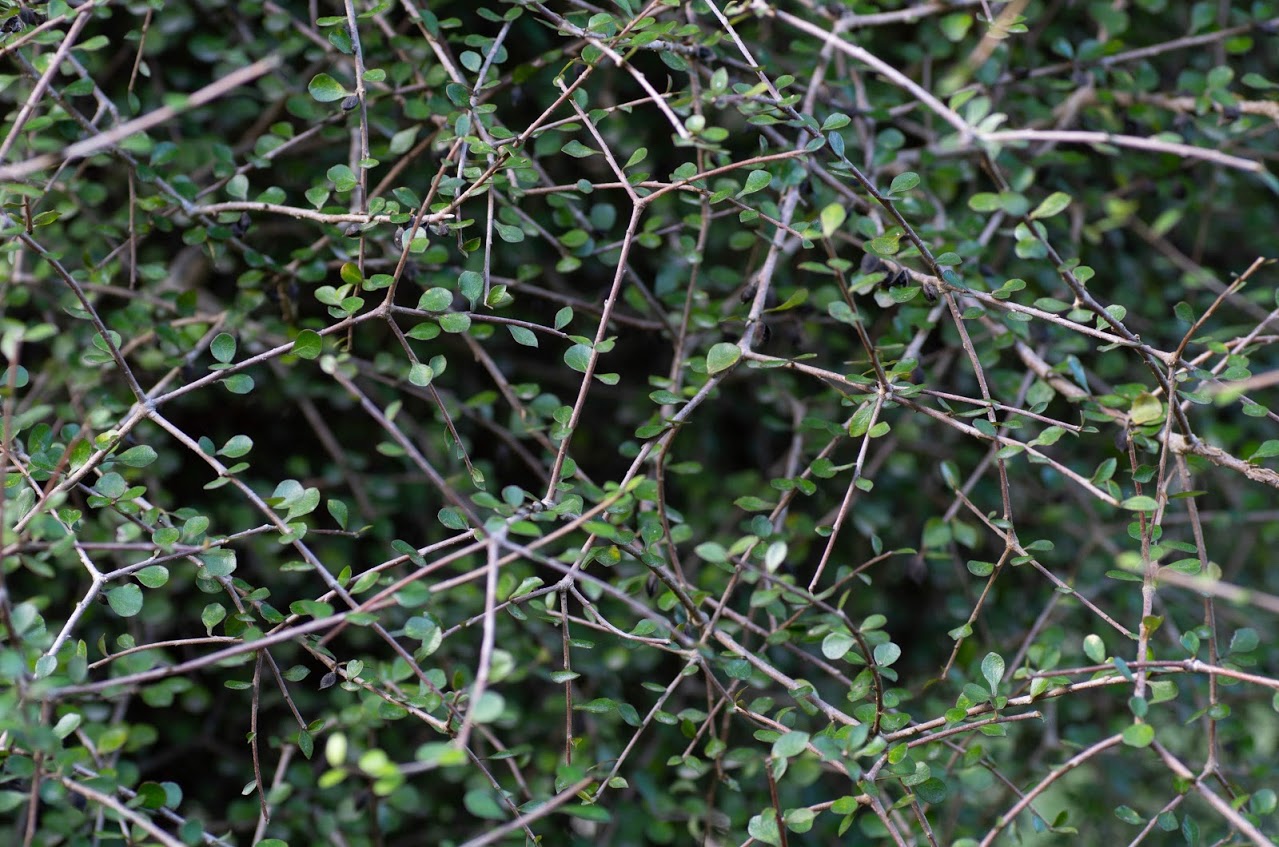
Libertia cranwelliae - Threatened, Nationally Critical. Recently (2006) rediscovered in the wild by Graeme Atkins at one site near East Cape, where about 30 plants grow in coastal forest.
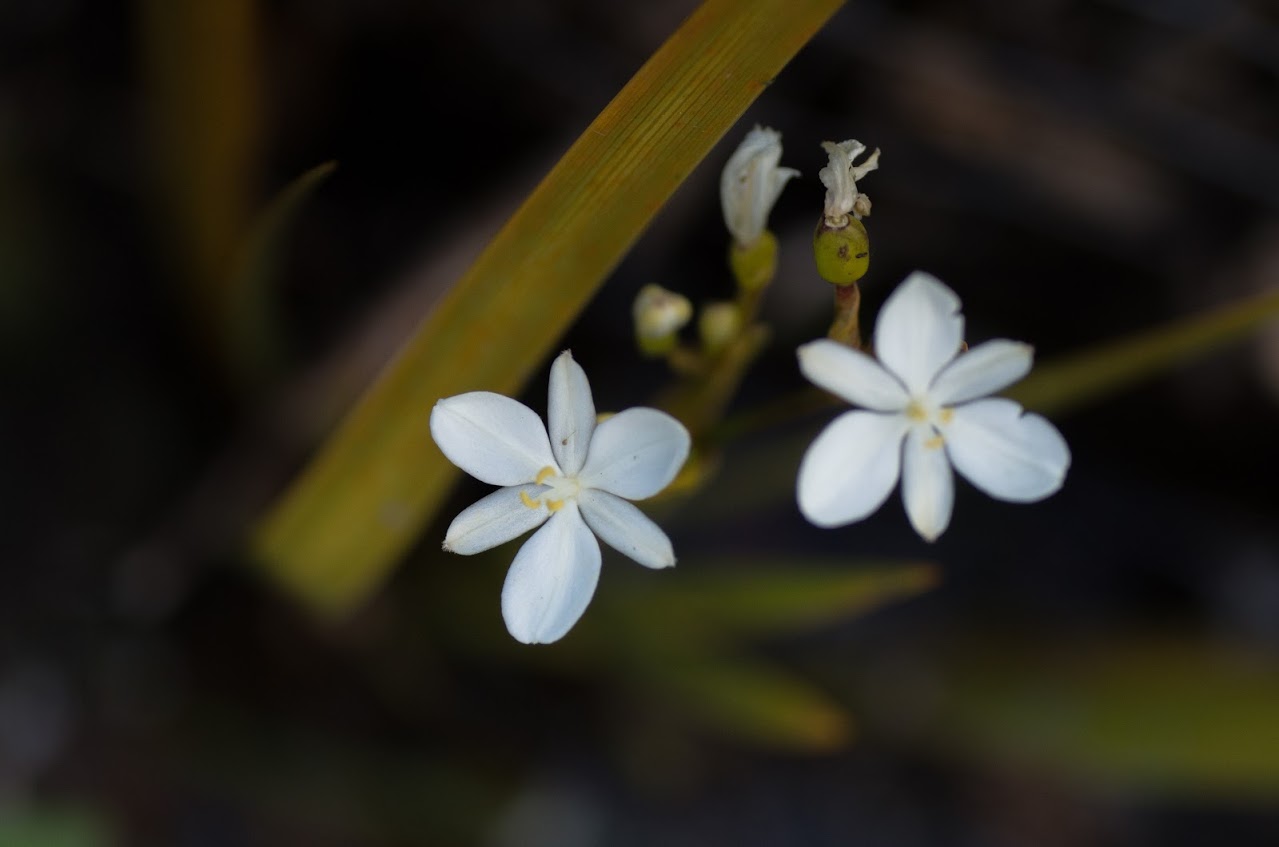
Te Auanga (Geranium retrorsum) - Threatened, Nationally Vulnerable, now very uncommon throughout most of its North Island range, though it is still common in parts of the eastern South Island (de Lange et al. 2010). In the North Island it is now mainly found on northern offshore islands. It is threatened by browsing animals such as rabbits which avidly dig up plants for the roots. The open habitats it prefers are also now largely dominated by taller growing weeds. It is still said to be common in Australia.

Hebe tairāwhiti (Veronica tairāwhiti) - At Risk, Naturally Uncommon. The distribution of this stunning plant is from Hicks Bay to Wairoa. It is closely related to the more well known Koromiko and shares the same amazing medicinal properties. The leaves from this plant are great at curing stomach upsets. It is so effective that it was dried and sent to the NZ troops in WWI to cure dysentery. Click here for more information.
Full Plant List
| Genus | Species | Māori Name | Also Known As |
|---|---|---|---|
| Anemanthele | lessoniana | - | - |
| Apium | prostratum | - | - |
| Arthropodium | cirratum | Rengarenga | Rengarenga |
| Brachyglottis | repanda | - | - |
| Carex | flagellifera | - | - |
| Carex | solandri | - | - |
| Carmichaelia | australis | - | - |
| Carpodetus | serratus | Putaputaweta | Marble leaf |
| Chionochloa | conspicua | Hunangamoho | Broad leaved bush tussock |
| Clematis | forsteri | - | Forster’s clematis |
| Clematis | paniculata | Puawananga | White clematis |
| Clianthus | maximus | Kōwhai ngutu-kākā | Kaka beak |
| Coprosma | acerosa | - | - |
| Coprosma | areolata | - | - |
| Coprosma | crassifolia | - | - |
| Coprosma | lucida | Karamu | Karamu |
| Coprosma | pedicellata | - | - |
| Coprosma | rhamnoides | - | - |
| Coprosma | spathulata | - | - |
| Cordyline | australis | Tī Kouaka | Cabbage tree |
| Corynocarpus | laevigatus | Karaka | Karaka |
| Dacrycarpus | dacrydioides | Kahikatea | Kahiakatea |
| Dichelachne | crinita | - | Long-hair plume grass |
| Dichondra | repens | - | - |
| Discaria | toumatou | Matakouri | Matakouri |
| Dysoxylum | spectabile | Kohekohe | Kohekohe |
| Entelea | arborescens | Whau | Whau |
| Euphorbia | glauca | - | - |
| Freycinetia | banksii | Kiekie | Kiekie |
| Fuchsia | excorticata | Kōtukutuku | Fuschia |
| Fuscospora | solandrii | - | Black beech |
| Geniostoma | rupestre | Hangehange | Hangehange |
| Geranium | retrorsum | - | - |
| Griselinia | lucida | Puka | Broadleaf |
| Haloragis | erecta | Toatoa | - |
| Hebe | tairawhiti | Korimiko | Hebe |
| Hedycarya | arborea | Porokaiwhiri | Pigeonwood |
| Hibiscus | richardsonii | Puārangi | Native Hibiscus |
| Hierochloe | redolens | Kāretu | Holy grass |
| Hoheria | sexstylosa | Houhere | Lacebark |
| Hydrocotyle | elongata | - | - |
| Jovellana | sinclairii | - | NZ calceolaria |
| Knightia | excelsa | - | - |
| Kunzea | robusta | Kānuka | Kānuka |
| Lagenophora | pumila | - | - |
| Laurelia | novaezelandiae | Pukatea | Pukatea |
| Leptopsermum | scoparium | Mānuka | Mānuka |
| Leptostigma | setulosum | - | - |
| Leucopogon | fasciculatus | Mingimingi | Tall mingimingi |
| Libertia | cranwelliae | - | Cranwell’s Iris |
| Lobelia | angulata | - | Pratia |
| Lophomyrtus | obcordata | Rohutu | Rohutu |
| Mazus | novaezeelandiae ssp. impolitus f. hirtus | - | Swamp musk |
| Melicope | ternata | Whārangi | Whārangi |
| Melicytus | micranthus | - | Swamp Māhoe |
| Melicytus | ramiflorus | Māhoe | Māhoe |
| Metrosideros | perforata | Akatea | Akatea |
| Metrosideros | robusta | Rata | Northern rata |
| Microlaena | stipoides | - | Meadow rice grass |
| Microsorum | pustulatum | Kowaowao, Pāraharaha | Hounds tongue |
| Muehlenbeckia | complexa | Pōhuehue | Pōhuehue |
| Myosotis | pottsiana | - | - |
| Nestegis | lanceolata | Maire | White maire |
| Nestegis | montana | Maire | Narrow-leaved maire |
| Pelargonium | inodorum | Kōpata | Kōpata |
| Pennantia | corymbosa | Kaikomako | Kaikomako |
| Pimelea | longifolia | - | Long-leaved pimelea |
| Pimelea | prostrata | Pinatoro | NZ Daphne |
| Piper | excelsum | Kawakawa | Kawakawa |
| Pittosporum | obcordatum | - | Heart-leaved kohuhu |
| Pittosporum | ralphii | Karo | - |
| Pittosporum | tenuifolium | Kohuhu | Black matipo |
| Poa | anceps | - | Broad-leaved poa |
| Podocarpus | laetus | - | Halls Totara |
| Prumnopitys | taxifolia | Matai | Matai |
| Pseudopanax | arboreus | Whauwhaupakū | Fivefinger |
| Pseudowintera | colorata | Horopito | Alpine peppertree |
| Scandia | rosifolia | Koheriki | NZ angellica |
| Schefflera | digitata | Pate | Seven finger |
| Senecio | banksii | - | - |
| Senecio | quadridentatus | Pahokoraka | Cotton fireweed |
| Senecio | rufiglandulosus | - | - |
| Sonchus | kirkii | Pūha | NZ sow thistle |
| Sophora | tetraptera | Kōwhai | Large-leaved Kōwhai |
| Streblus | banksii | Turepō | Small-leaved milk tree |
| Streblus | heterophyllus | Turepō | Large-leaved milk tree |
| Tetragonia | tetragonoides | - | - |
| Teucridium | parvifolium | - | - |
| Tupeia | antartica | Piritā | White mistletoe |
| Vitex | lucens | Pūriri | Pūriri |
| Wahlenbergia | violacea | - | Violet harebell |
Links
- The 1769 Seed Archive on Radio New Zealand’s Our Changing World
- Banks & Solander Botanical Collections Tai Rawhiti (Ewen Cameron, Botanist, Auckland War Memorial Museum)
- Tairāwhiti plants collected on Endeavour expedition, based on citations from the Florilegium - Anne Salmond, 2017
